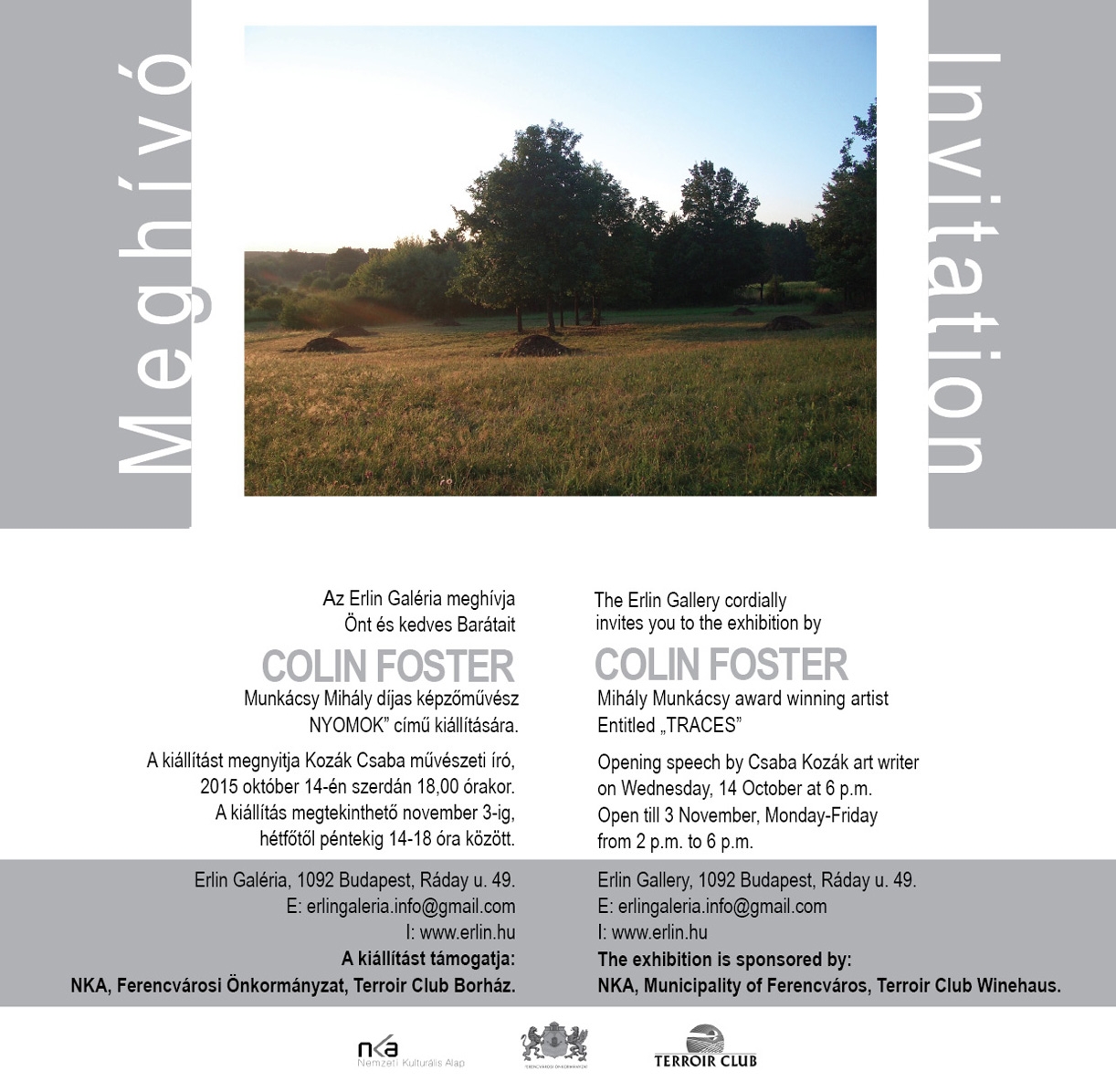Az Erlin Galéria meghívja Önt és kedves Barátait
COLIN FOSTER Munkácsy Mihály-díjas képzőművész
„NYOMOK” című kiállítására.
A kiállítást megnyitja Kozák Csaba művészeti író,
2015. október 14-én, szerdán 18.00 órakor.
The Erlin Gallery cordially invites you to the exhibition by
COLIN FOSTER Mihály Munkácsy award winning artist
entitled „TRACES"
Opening speech by Csaba Kozák art writer
on Wednesday, 14 October at 6 p.m.
Erlin Galéria
> 1092 Budapest, Ráday u. 49.
> Telefon: +36 20 7751711
> Email: erlingaleria@erlin.hu
> Honlap: www.erlin.hu

Traces
Two of the works made this summer appear only in documentary form in the exhibition. The
landscape in which they were made is an integral part of them and this cannot be transported. The first
was made in Márokföld, Hungary and the second in a Slovakian clay pit. They are both related to
archaeological digs revealing traces of the past.
The exhibited sculptures I like to think of as memory traces. For example, the largest "Anchor,
Vrbnik" recalls an anchor that I saw on the harbour in this small town in Croatia. It had become so
encrusted with barnacles that it only bore traces of its original shape, having become completely
transformed into something else. As these works are made using an artificial resin the suggestion is that
they are "artificial" copies of the real thing – that somewhere there is the real sculpture of which these
are copies, perhaps traces of the original.
In the vitrine we may find several stamps with which I have been recently using to stamp the
earth. One was used in both the land art works, marking the exact centre of the circular works, as a kind
of signature. Apart from these traces of some smaller forms are included.
Finally there are some drawings of a recent series which dealt with the way in which sunlight
"moves" across surfaces.
Nyomok
A kiállításban két munkám, amelyek ezen a nyáron készültek el, csak dokumentációs formában
jelennek meg. A táj, amiben elkészültek, a munka szerves része, és nem szállítható. Az első Márokföldön
jött létre, a második egy agyag fejtőben, Szlovákiában. Mindkét munka régészeti ásatásokat idéz fel és így
a múltnak nyomai.
A szobrokra úgy tekintek, mint memórianyomokra. Például a legnagyobb szobor- „Horgony,
Vrbnik”- emlékeztet egy horgonyra, amit a kis város kikötőjében találtam. Annyira rátelepedtek a
kagylók, hogy az eredeti formája csak nyomokban jelent meg, a horgony teljesen áttranszformált.
Tekintve, hogy ezek a munkák műgyantából készülnek, úgy is lehet értelmezni őket, mint művariációi egy
„valódi” szobornak.
A vitrinben található pecsétekkel az utóbbi időben a földet pecsételtem meg. Az egyik ennek a
két munkának a középpontját jelölte meg, ami a fotókon szerepel, mint valamiféle aláírás vagy nyom.
Emellett más kisebb formákat is kiállítottam.
Utoljára rajzok vannak egy előző sorozatból, amelyek a nap „mozgásával” a felületeken
foglalkoznak.

